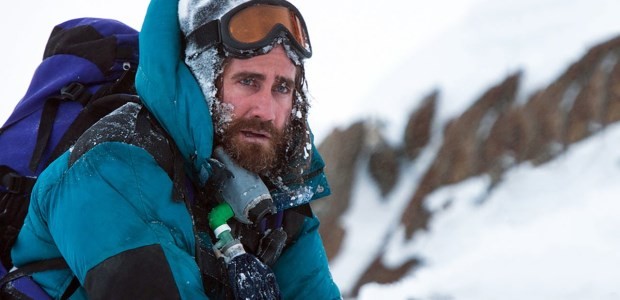Filmed for the biggest screens out there, Everest is the result of an expertly crafted production design that boasts unparalleled vistas of the world’s tallest mountain. Even during its most harrowing moments there is an unrefined sense of grandeur that will appeal to most viewers. That alone should be worth the price of admittance, but also worth mentioning is that expectations should be kept in check.
Majestic in scale, both literally and visually, Everest runs at 120 minutes while actively seeking to answer a very important question – why do people do it? More shocking than some of the most brutal moments in the film is the intricacy of the answer that most viewers won’t get until after the film. Based on the ill-fated 1996 expedition to the titular summit, William Nicholson and Simon Beaufoy’s screenplay is set in a world where reaching the summit has more commercial value than anything else. Even more shocking is the fact that some of these climbers are everyday-people who pay top dollar for bragging rights to the summit. One of them is a mailman (John Hawkes) and another is an influential doctor from Texas (Josh Brolin). Oddly, the going rate is $65,000 for three months preparation that comes with Sherpa guides and a seasoned team leader. All this might sound like a dodgy deal for anyone confined to the bunny slope of a ski resort. Unsurprisingly, and as based on the events of 10 May 1996, the expedition was destined for disaster and this is where the film does what it does best.
For what could have been the motion picture event of the year, Everest is narratively a mess, and for the sake of a pun I’d even say it’s a disaster in some ways. While it’s always great to have an ensemble cast playing out the story, the main problem arises from bit sized characters in what should have been important roles for these characters. There are so many of these characters spread across the narration, that at any given time, you can’t tell who the central character is even if some of these characters are primed with a background sob-story. Real life mountaineer – Rob Hall – is given some importance as the expedition leader and Australian actor Jason Clarke anchors this role with finesse. On the other hand, the second team led by Jake Gyllenhaal’s Scott Fischer loses significance although there’s a good 45 minutes used up for character introduction and background story. Amongst others, Sam Worthington, Robin Wright and Keira Knightley join Gyllenhaal in bit roles that barely nurture, if not tilt-shift the narrative towards characters destined to survive or perish.
Despite some unnecessary background melodrama and the aforementioned zigzagging of the story, Icelandic director Baltasar Kormákur brings out an overwhelming amount of dread as the minutes pile up along with the body count. It’s one of the few moments in the film where you get a little premonition on what is about to happen. This is largely due to the way Emily Watson executes her role as the Base Camp coordinator and a person with remarkable insight. If there’s one person who outperforms the rest of this star studded lineup, it’s definitely Watson and does so with just her eyes. Just as captivating are the technical aspects of this film with heart-stopping panoramas from the foothills of Nepal right up to the pinnacle of Mt. Everest. Just don’t go in expecting a white-knuckle action-thriller and you won’t feel robbed. At its best, Everest is an audiovisual ‘experience’ that places the viewer right in the middle of one of the harshest terrains on the planet. On an IMAX screen, that’s a fair deal for the 99 percent of us who haven’t climbed anything more than a ladder.
Rating: 




